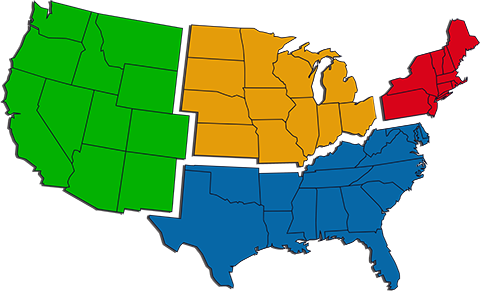Architecture Billings Fall Again, Outlook Remains Cautious

Only one-third of firms anticipate stronger business next year
THE MOST RECENT REPORT: November 19, 2025
WASHINGTON – November 19, 2025 – Business conditions at architecture firms remained soft as the fourth quarter of 2025 began, according to the latest data from the American Institute of Architects’ (AIA) Architecture Billings Index (ABI).
The ABI score rose to 47.6 in October from 43.3 in September, indicating that while a majority of firms still saw a decline in their billings, the share was smaller than it was last month. Inquiries into new projects also saw their most significant increase in a year and a half. Despite this positive movement, challenges persist as the value of new design contracts decreased again.
“Architecture firms estimate that billings declined modestly this year. Unfortunately, they are not expecting a significant turnaround in 2026,” said Kermit Baker, PhD, AIA Chief Economist. “About a third of firms nationally project that their billings will increase this coming year, and a slightly higher share expect them to remain about the same. Firms with a multifamily specialization are the most optimistic about prospects for 2026.”
Key ABI highlights for October include:
- Regional averages: Midwest (49.6); South (45.3); Northeast (45.1); West (42.1)
- Sector index breakdown: multifamily residential (46.8); commercial/industrial (43.9); institutional (46.1); mixed practice (firms that do not have at least half of their billings in any one other category) (44.0)
- Project inquiries index: 54.8
- Design contracts index: 47.1
Regional and sector categories are measured as three-month moving averages and may not align with the national score.
Inside Lighting strives to accurately report certain data on the day it is reported by the AIA, but updates to past data with new three-month rolling averages might not be made. For official and most current reports, refer to the AIA ABI numbers. All ABI data is sourced from the AIA.
Interpreting the ABI:
The Architecture Billings Index (ABI) is a leading economic indicator of construction activity. It is produced by the American Institute of Architects (AIA) and it reflects the approximate nine-to-twelve month lead time between architecture billings and construction spending.
The ABI is based on a monthly survey of architecture firms that asks respondents to rate the level of their billings (or the amount of new design contracts) as either "increase," "decrease," or "no change" from the previous month. The results are then compiled into an index, where a score above 50 indicates an increase in billings, and a score below 50 indicates a decrease in billings.
The ABI is widely used in the construction industry, as well as by economists and analysts, to track the health of the construction market and to forecast future building activity. It is considered a leading economic indicator because changes in architecture billings often precede changes in overall economic activity, such as employment and GDP.
The ABI provides a snapshot of the demand for design services as well as an indication of the near-term outlook for the construction industry.
The survey panel asks participating architectural firms whether billings increased, decreased or stayed the same in the month that just ended. According to the proportion of respondents choosing each option, a score is generated, which represents an index value for each month.
- An index score of 50 indicates no change in firm billings versus the previous month.
- A score above 50 indicates an increase in firm billings versus the previous month.
- A score below 50 indicates an decrease in firm billings versus the previous month.
- NOTE: Index numbers cited for the last three reported months are preliminary.
- The regional and sector categories are calculated as a 3-month moving average, whereas the national index, design contracts and inquiries are monthly numbers.
Source: The American Institute of Architects (AIA)
National Architecture Billings Index
Source: The American Institute of Architects (AIA)
RELATED: Historical ABI Data 2008 - 2022 »
Don’t miss the next big ABI update…Click here to subscribe to the inside.lighting InfoLetter |
Regional Architecture Billings Index
(Three month rolling average)

Source: The American Institute of Architects (AIA)
Sector-Specific Architecture Billings Index
Three-month rolling average
Commercial/Industrial
Buildings related to commerce and industry. Office space, banks, retail, factories, etc.
Institutional
Schools, civic/government buildings, museums, hospitals, etc.
Multifamily Residential
Town homes, apartment complexes, condominiums, etc.
Mixed Practice
Firms that do not have at least half of their billings in any one other category.
Source: The American Institute of Architects (AIA)
Don’t miss the next big ABI update…Click here to subscribe to the inside.lighting InfoLetter |









